Abstract
The symptom of excessive sleepiness in children and adolescents does not necessarily cause great concern to families and professionals involved in their care. Children may deny the symptom and minimise the adverse effects. These factors contribute to an underdiagnosis of narcolepsy in this age group when clinical diagnosis is difficult as associated symptoms may not have appeared or are hard to elicit. In this paper three children whose difficult behaviour contributed to the presentation of their sleep disorder are described.
Full text
PDF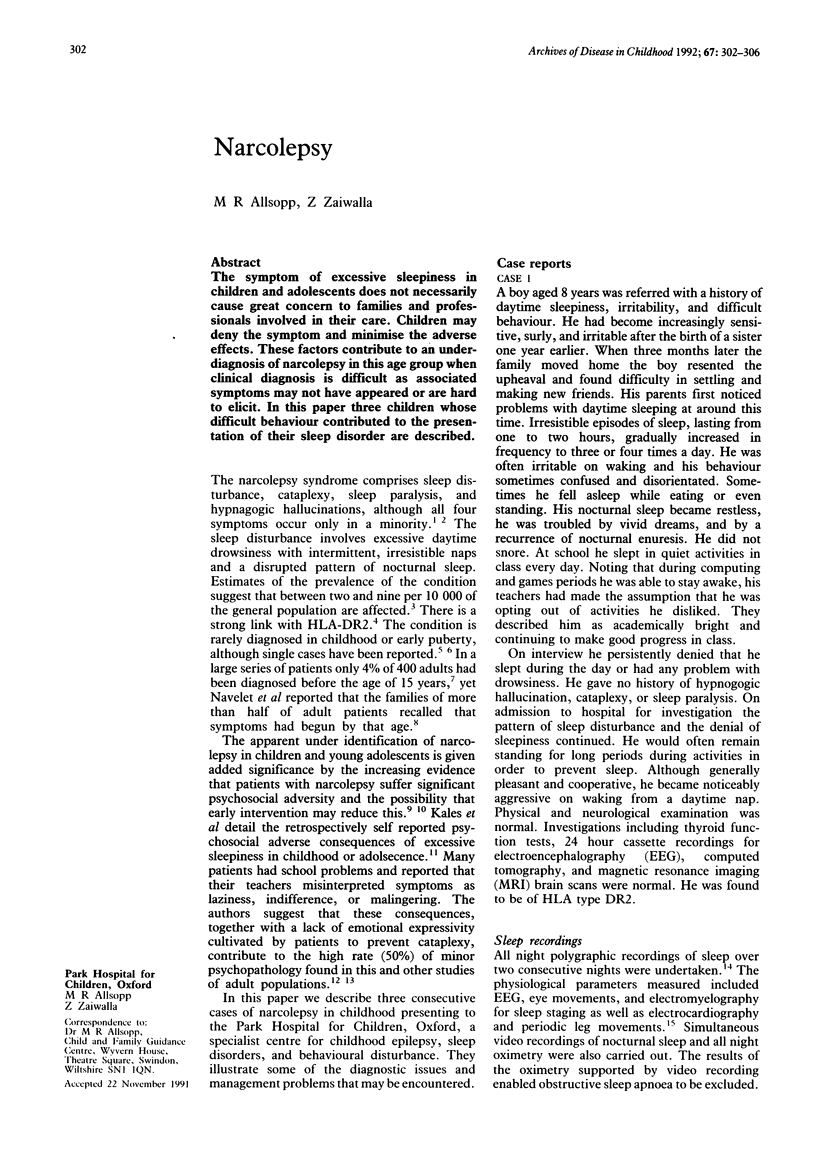
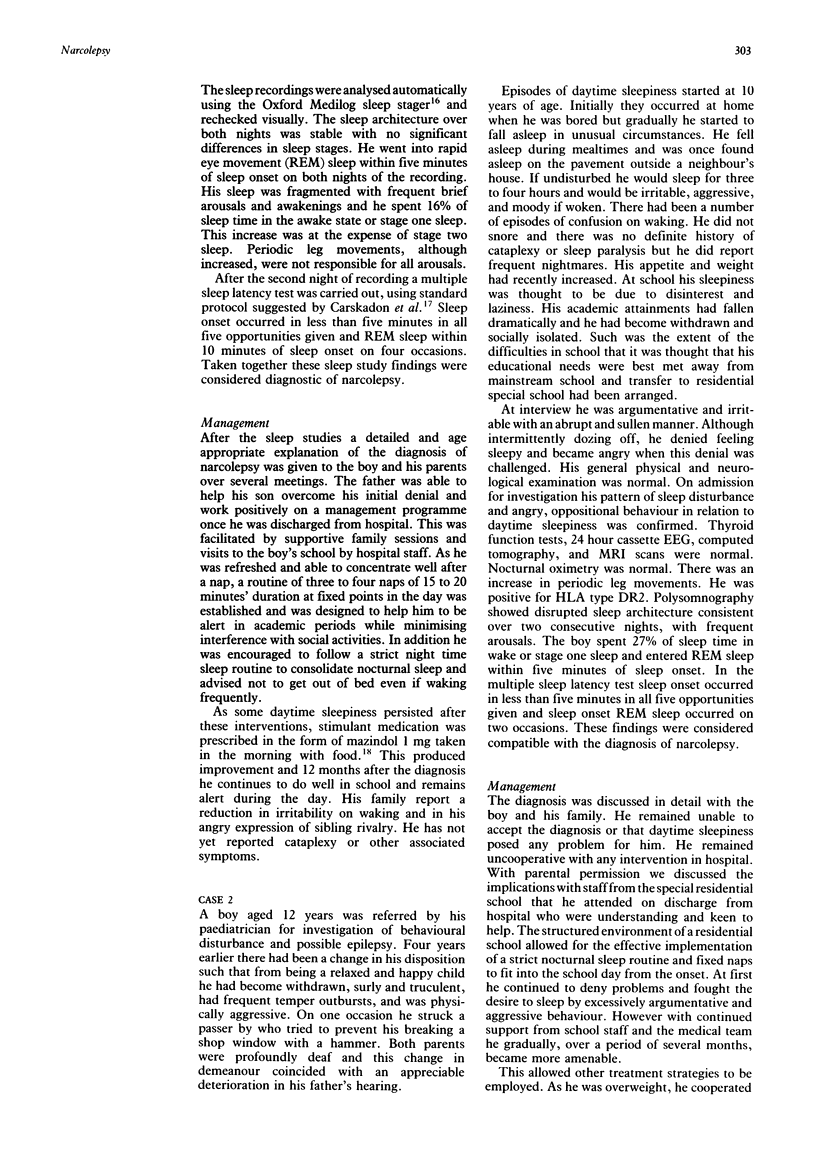
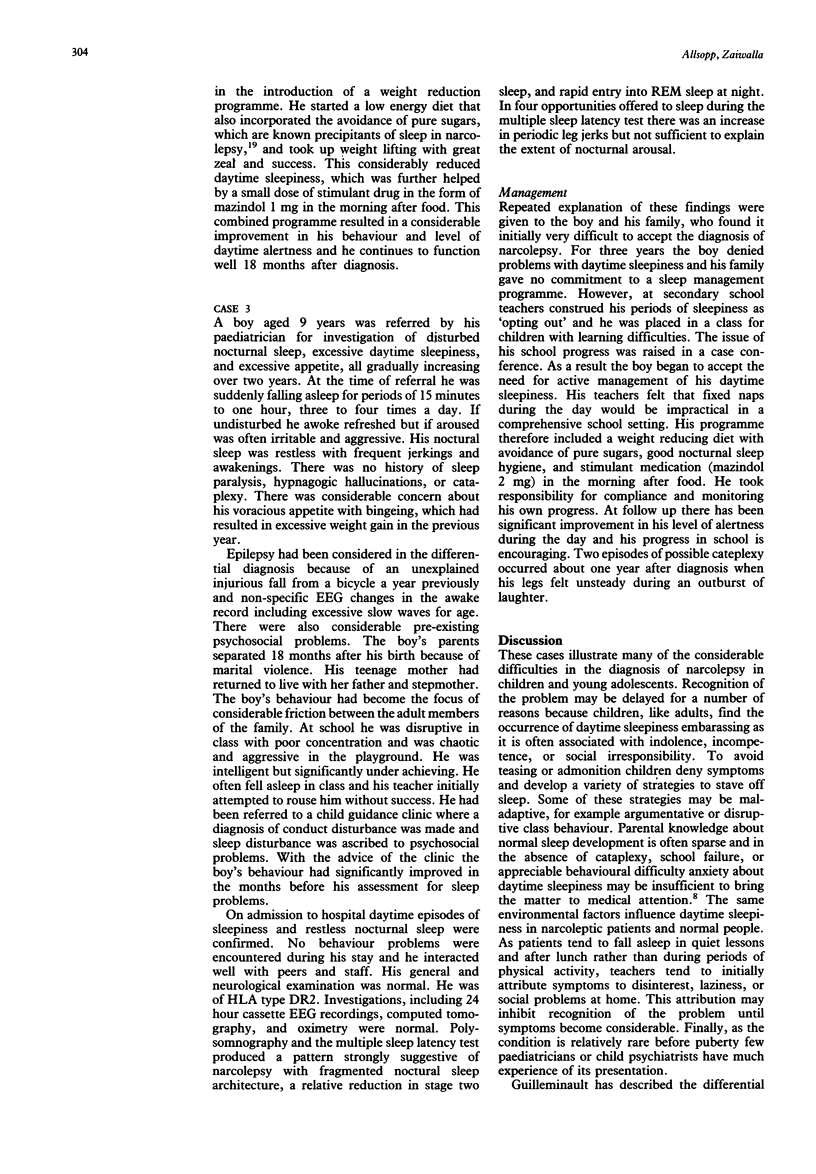
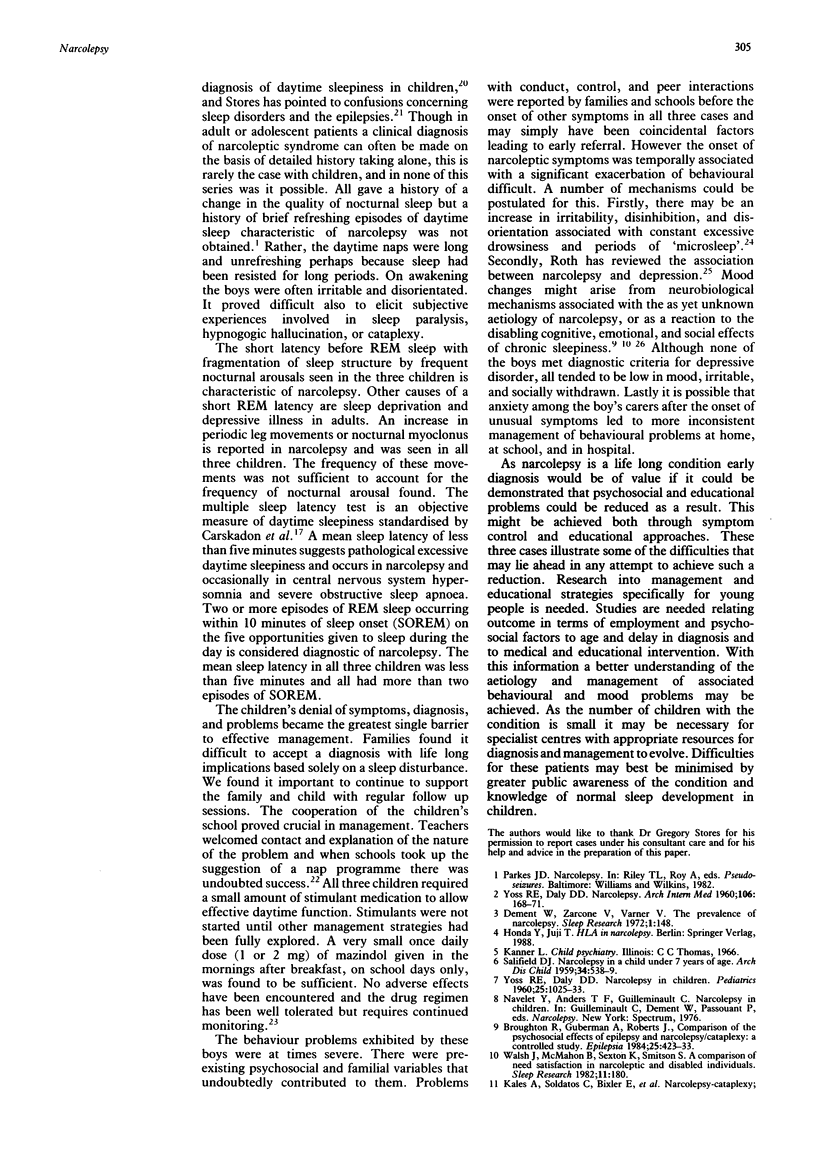
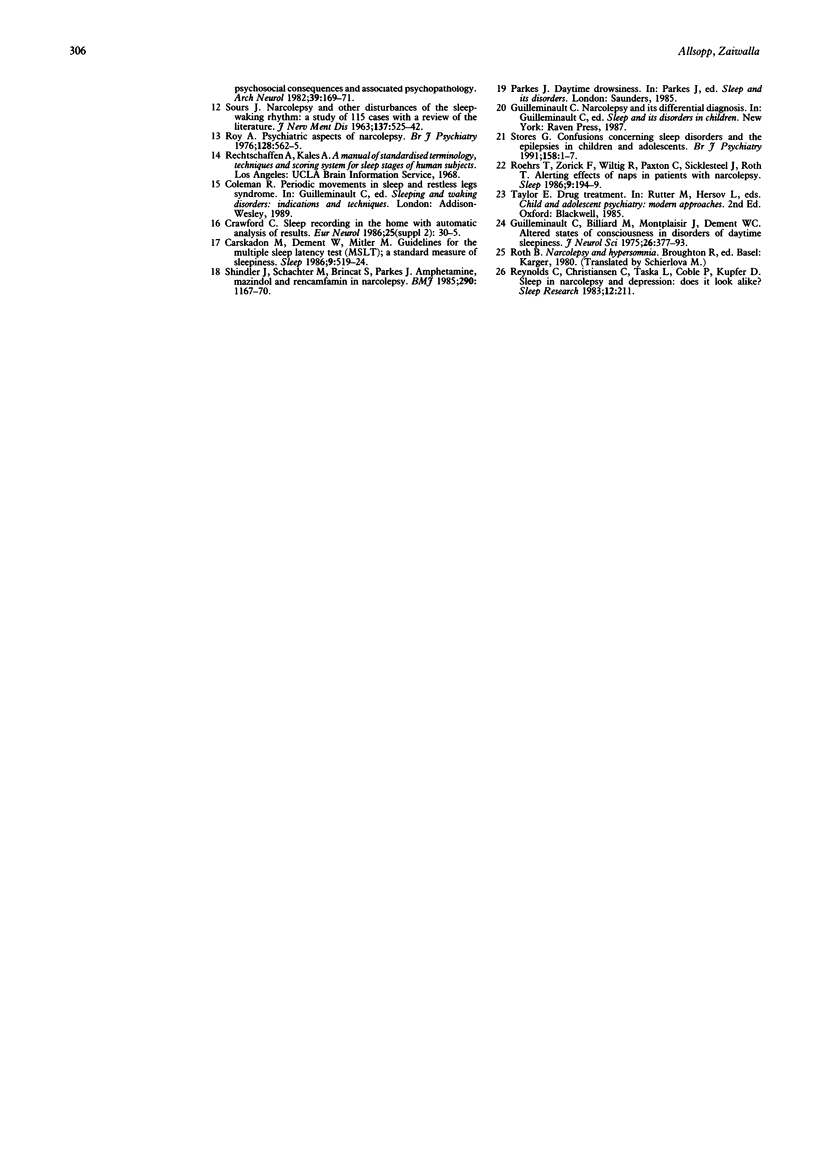
Selected References
These references are in PubMed. This may not be the complete list of references from this article.
- Broughton R. J., Guberman A., Roberts J. Comparison of the psychosocial effects of epilepsy and narcolepsy/cataplexy: a controlled study. Epilepsia. 1984 Aug;25(4):423–433. doi: 10.1111/j.1528-1157.1984.tb03438.x. [DOI] [PubMed] [Google Scholar]
- Carskadon M. A., Dement W. C., Mitler M. M., Roth T., Westbrook P. R., Keenan S. Guidelines for the multiple sleep latency test (MSLT): a standard measure of sleepiness. Sleep. 1986 Dec;9(4):519–524. doi: 10.1093/sleep/9.4.519. [DOI] [PubMed] [Google Scholar]
- Crawford C. Sleep recording in the home with automatic analysis of results. Eur Neurol. 1986;25 (Suppl 2):30–35. doi: 10.1159/000116078. [DOI] [PubMed] [Google Scholar]
- Guilleminault C., Billiard M., Montplaisir J., Dement W. C. Altered states of consciousness in disorders of daytime sleepiness. J Neurol Sci. 1975 Nov;26(3):377–393. doi: 10.1016/0022-510x(75)90209-9. [DOI] [PubMed] [Google Scholar]
- Kales A., Soldatos C. R., Bixler E. O., Caldwell A., Cadieux R. J., Verrechio J. M., Kales J. D. Narcolepsy-cataplexy. II. Psychosocial consequences and associated psychopathology. Arch Neurol. 1982 Mar;39(3):169–171. doi: 10.1001/archneur.1982.00510150039009. [DOI] [PubMed] [Google Scholar]
- Roehrs T., Zorick F., Wittig R., Paxton C., Sicklesteel J., Roth T. Alerting effects of naps in patients with narcolepsy. Sleep. 1986;9(1 Pt 2):194–199. doi: 10.1093/sleep/9.1.194. [DOI] [PubMed] [Google Scholar]
- Roy A. Psychiatric aspects of narcolepsy. Br J Psychiatry. 1976 Jun;128:562–565. doi: 10.1192/bjp.128.6.562. [DOI] [PubMed] [Google Scholar]
- SALFIELD D. J. Narcolepsy in a child under 7 years old. Arch Dis Child. 1959 Dec;34:538–539. doi: 10.1136/adc.34.178.538. [DOI] [PMC free article] [PubMed] [Google Scholar]
- SOURS J. A. NARCOLEPSY AND OTHER DISTURBANCES IN THE SLEEP-WAKING RHYTHM: A STUDY OF 115 CASES WITH REVIEW OF THE LITERATURE. J Nerv Ment Dis. 1963 Dec;137:525–542. doi: 10.1097/00005053-196312000-00002. [DOI] [PubMed] [Google Scholar]
- Shindler J., Schachter M., Brincat S., Parkes J. D. Amphetamine, mazindol, and fencamfamin in narcolepsy. Br Med J (Clin Res Ed) 1985 Apr 20;290(6476):1167–1170. doi: 10.1136/bmj.290.6476.1167. [DOI] [PMC free article] [PubMed] [Google Scholar]
- Stores G. Confusions concerning sleep disorders and the epilepsies in children and adolescents. Br J Psychiatry. 1991 Jan;158:1–7. doi: 10.1192/bjp.158.1.1. [DOI] [PubMed] [Google Scholar]
- YOSS R. E., DALY D. D. Narcolepsy in children. Pediatrics. 1960 Jun;25:1025–1033. [PubMed] [Google Scholar]
- YOSS R. E., DALY D. D. Narcolepsy. Arch Intern Med. 1960 Aug;106:168–171. doi: 10.1001/archinte.1960.03820020008003. [DOI] [PubMed] [Google Scholar]


